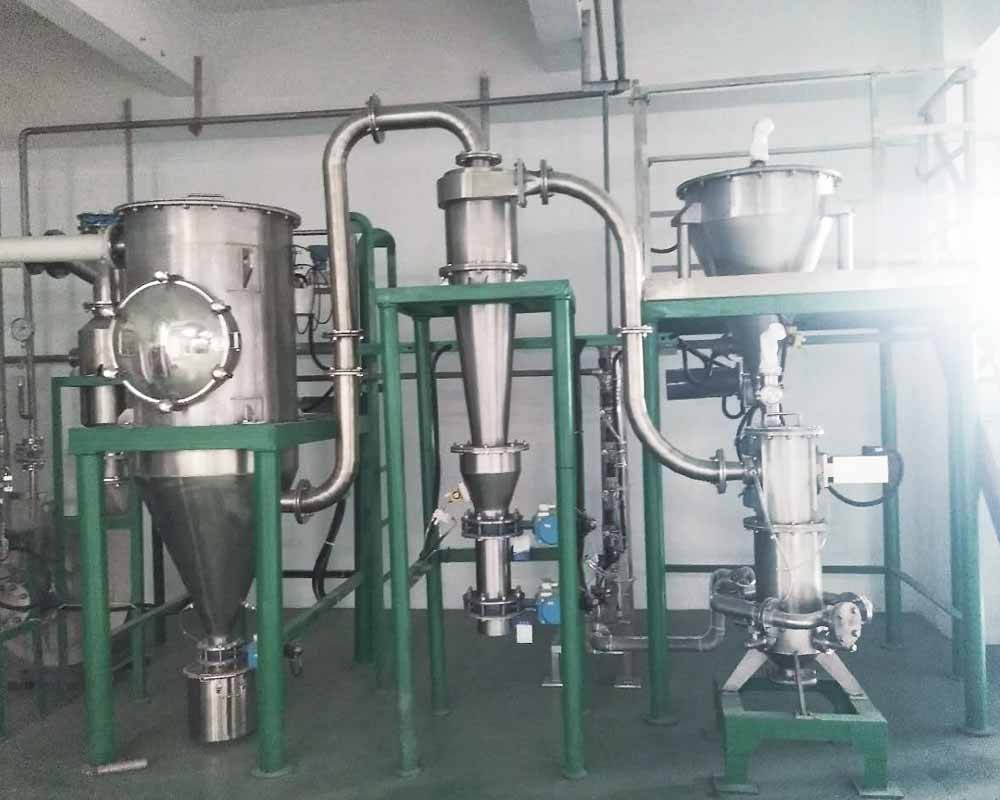Factors affecting the performance of cyclone dust collector
There are many factors that affect the performance of the cyclone dust collector. Generally speaking, one is the structure factor, and the other is the operating condition factor.

The structural factors are generally divided into four aspects:
- Entrance and top
1) The inlet form is generally divided into two types, direct inlet and vortex inlet.
2) The top of the dust collector is usually flat, but there are also raised and spiral types.
- Exhaust pipe
The exhaust pipe of ordinary cyclone dust collector is mostly cylindrical and concentric with the body of the dust collector. The shorter the insertion depth of the exhaust pipe, the lower the pressure loss.
- The length and diameter of the dust collector
Generally, when the ratio of length to diameter is greater than 2, it is called a high-efficiency cyclone dust collector; when it is less than 2, it is a low-type cyclone dust collector. The former is more efficient because the dust stays in it for a long time.
- Roughness of the inner wall
The rougher the inner wall of the cyclone dust collector, the easier it is to cause vortex, which will increase fluid resistance and reduce dust collection efficiency. Therefore, in the manufacturing, attention should be paid to the smooth welding seam, and the cylindrical and conical heads should strive to be smooth.
Factors in operating conditions
The operating conditions of the dust collector include factors such as gas flow, temperature, dust particle size and density.
- Gas performance
1) Gas flow: The efficiency and resistance of the cyclone dust collector are related to the flow rate of the gas into the dust collector.
2) Gas temperature: The gas temperature directly affects the viscosity coefficient of the gas. The coefficient of viscosity increases with the increase of temperature, while the dust collection efficiency decreases with the increase of temperature.
- Dust properties
1) Particle size of dust
The efficiency of the cyclone dust collector is very sensitive to the particle size of the dust. Generally, the efficiency of particles smaller than 5μm is low, while the dust collection efficiency of particles larger than 20μm is more than 90%.
2) Density of dust collection
The higher the dust density, the higher the efficiency; when the density reaches a certain value, the smaller the particles, the greater the influence of density. However, the impact on the actual dust collection range of the dust collector is relatively small.
3) Dust concentration
The dust concentration has an impact on the efficiency and resistance of the dust collector. The effect of dust concentration on the performance of the dust collector is that when the dust concentration is high, the friction loss between dust particles increases, the rotation speed of the airflow decreases, and the centrifugal drop occurs, which reduces the resistance and efficiency; but on the other hand, On the other hand, the increase of the concentration will cause the agglomeration of dust, which will increase the dust collection efficiency.
Therefore, only a sufficient understanding of the factors that affect the performance of the cyclone dust collector can better avoid performance loss and make the dust collection efficiency of the cyclone dust collector better.
